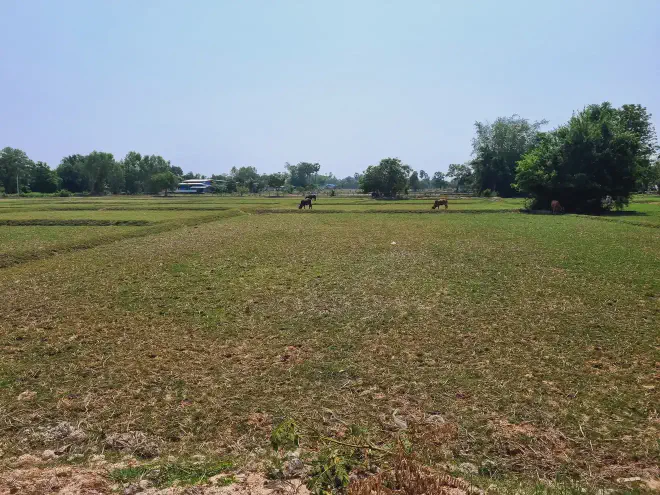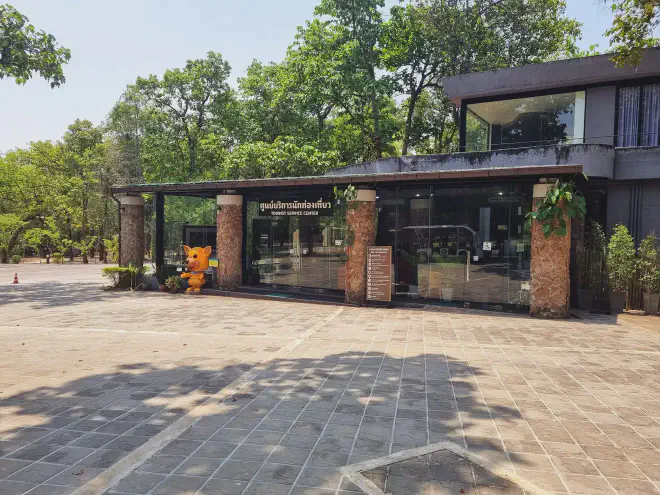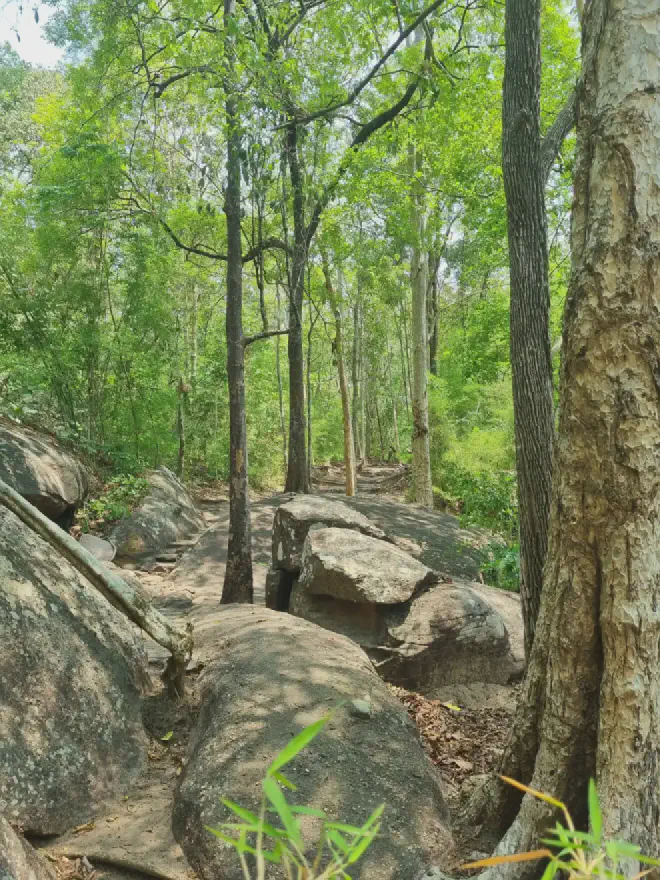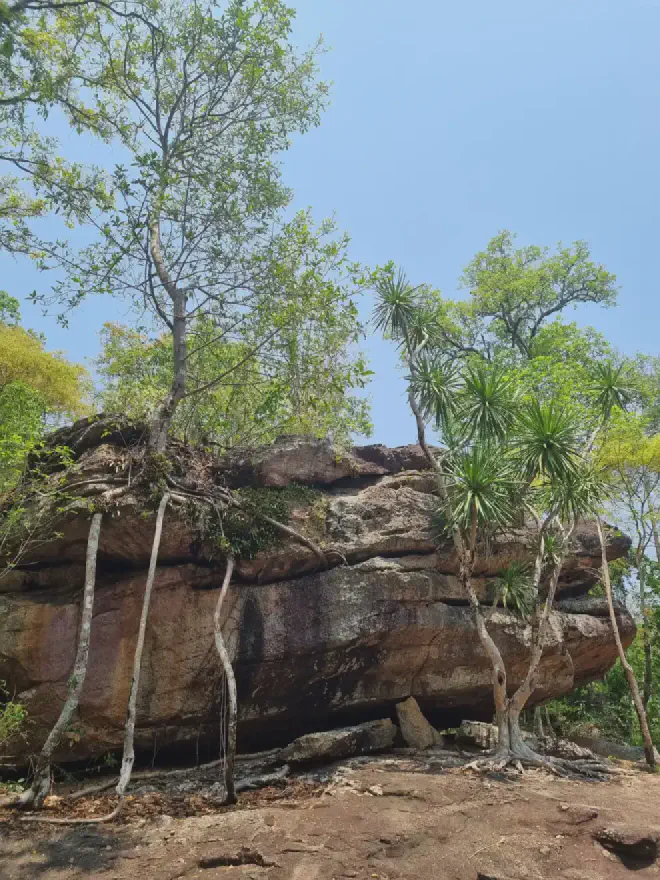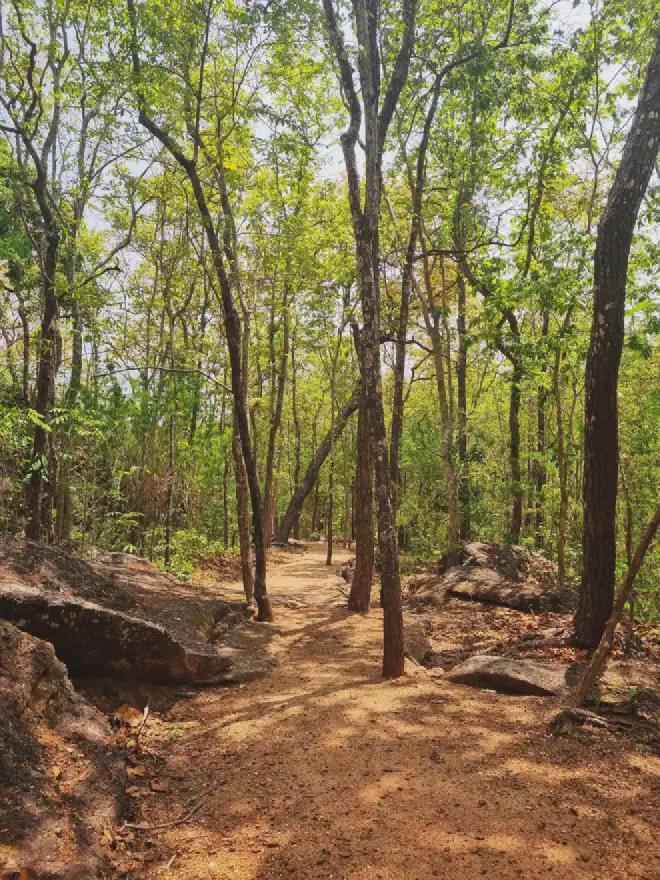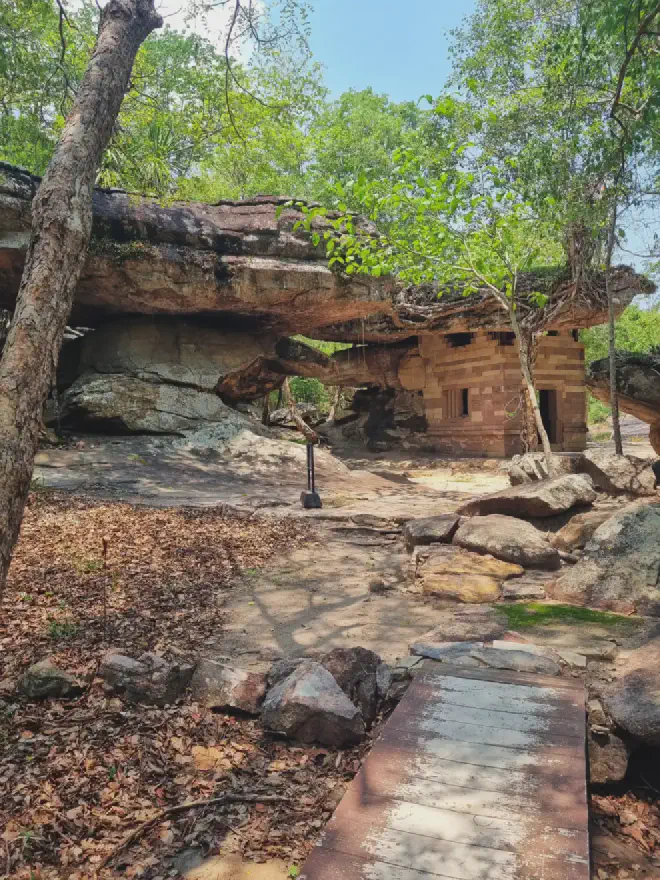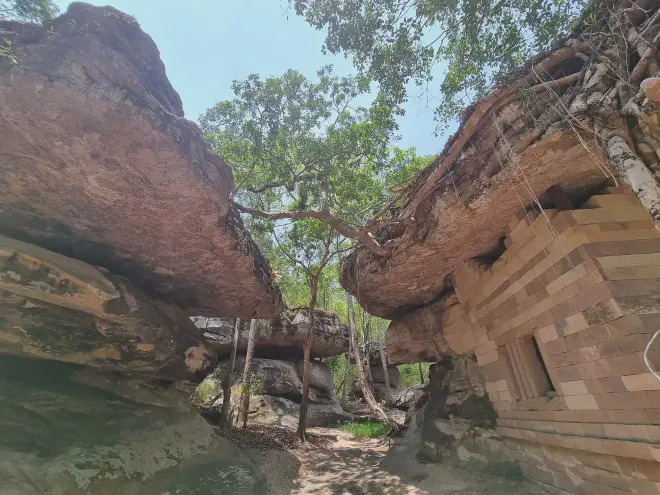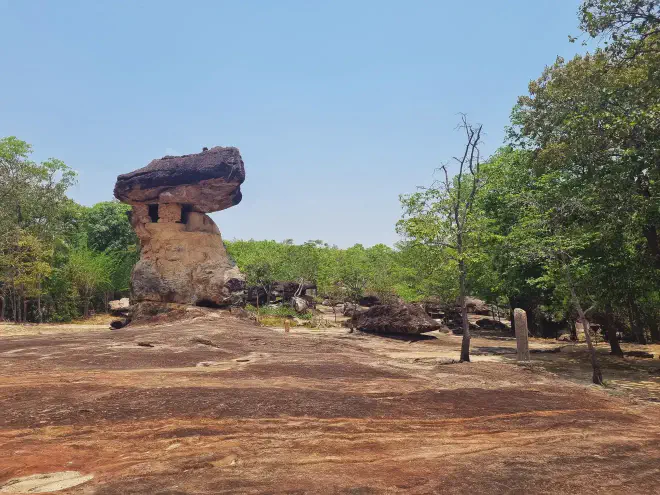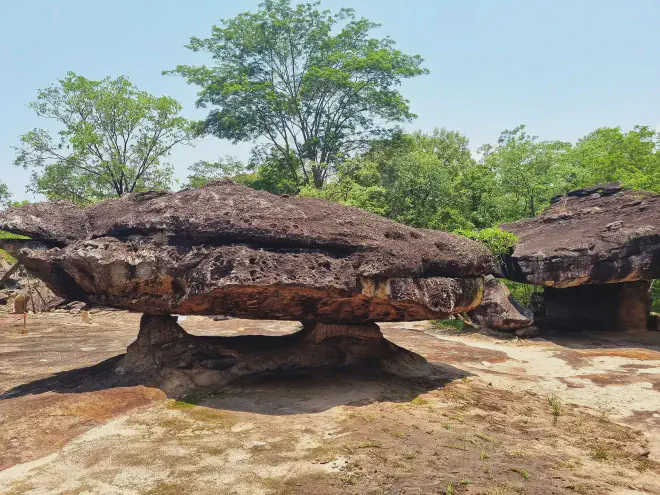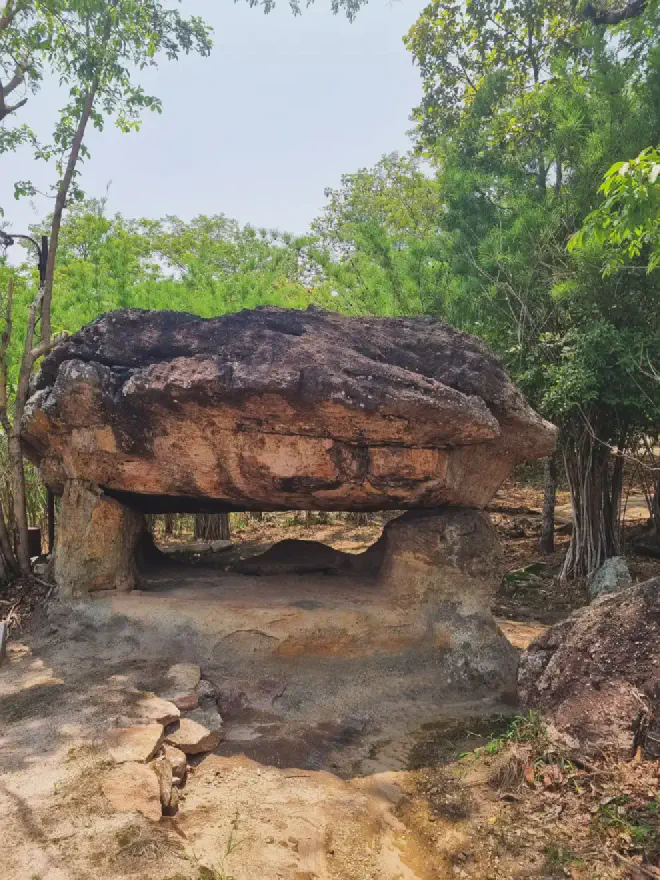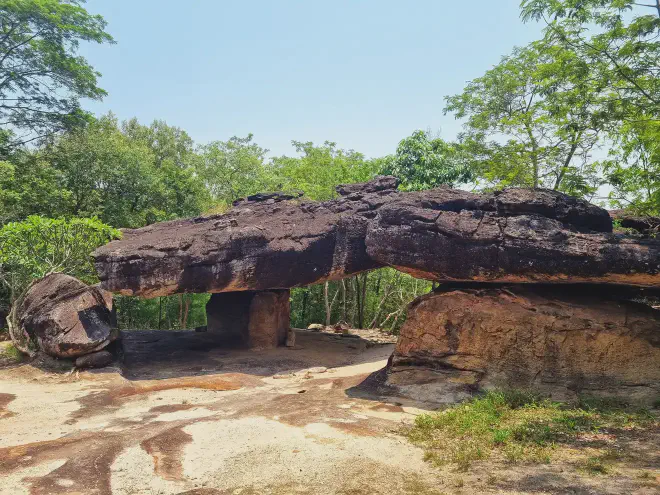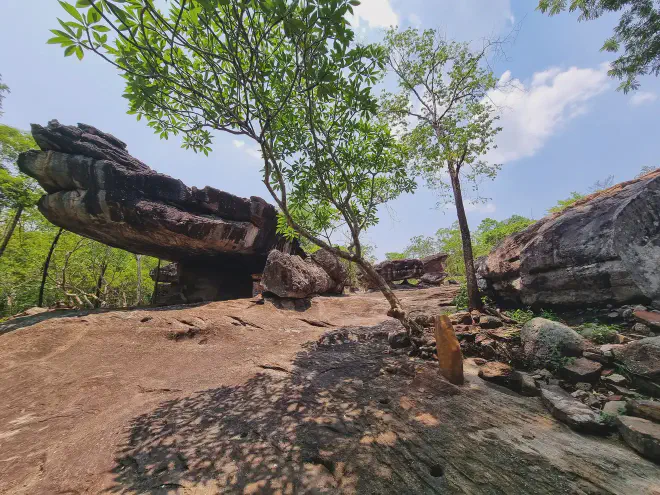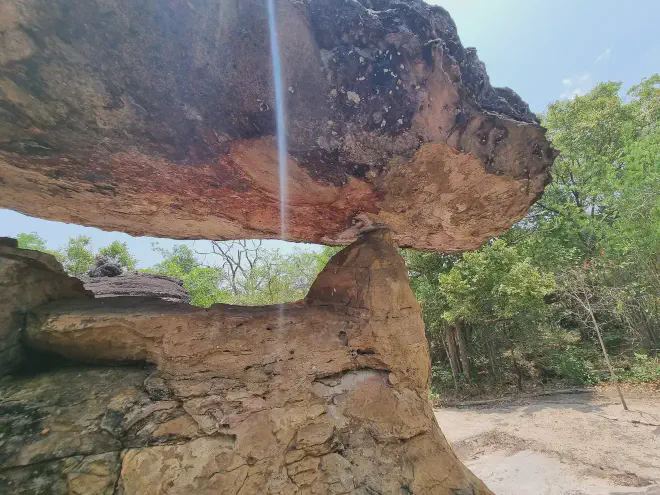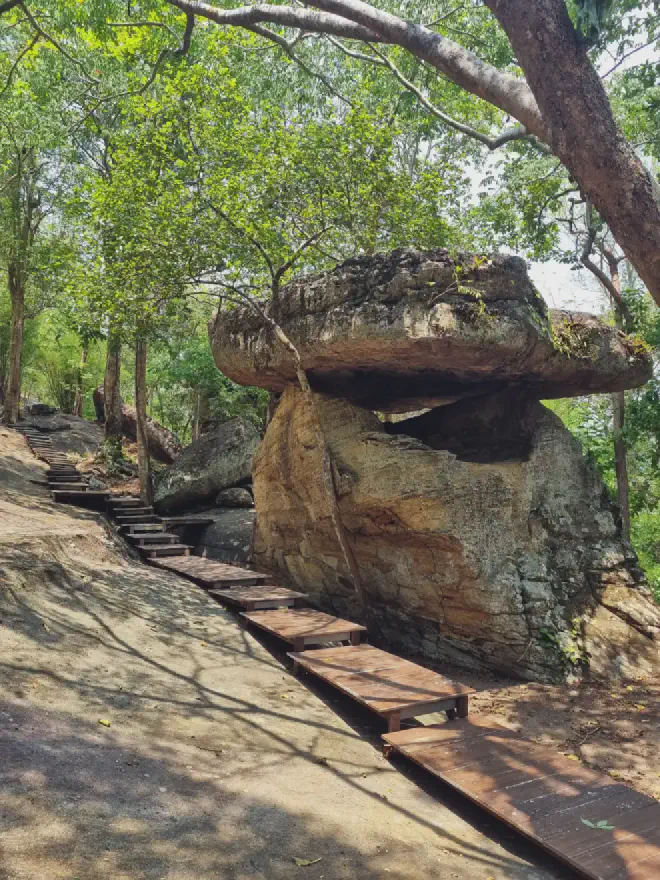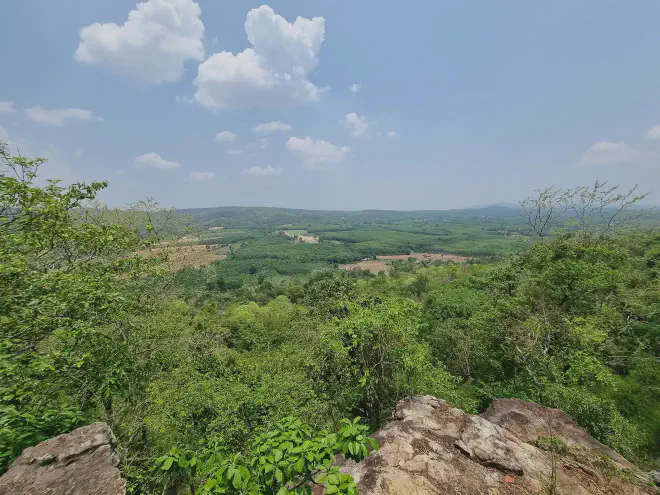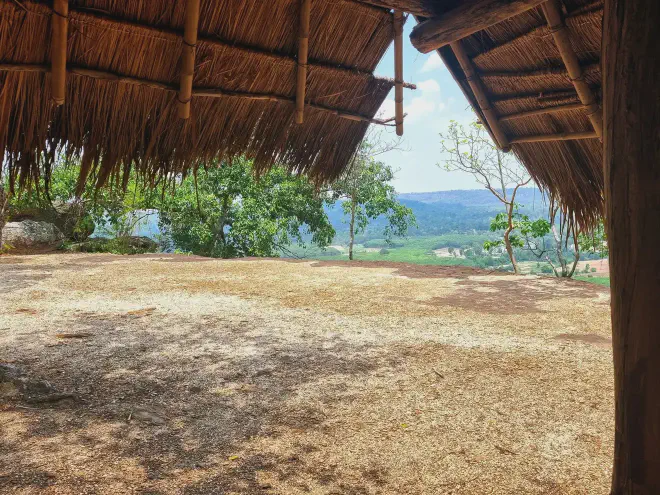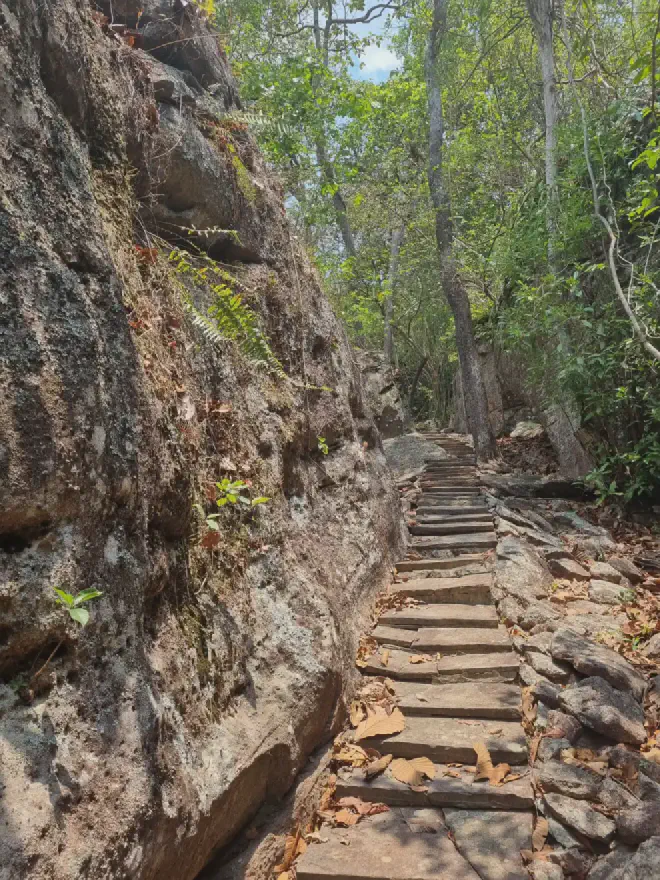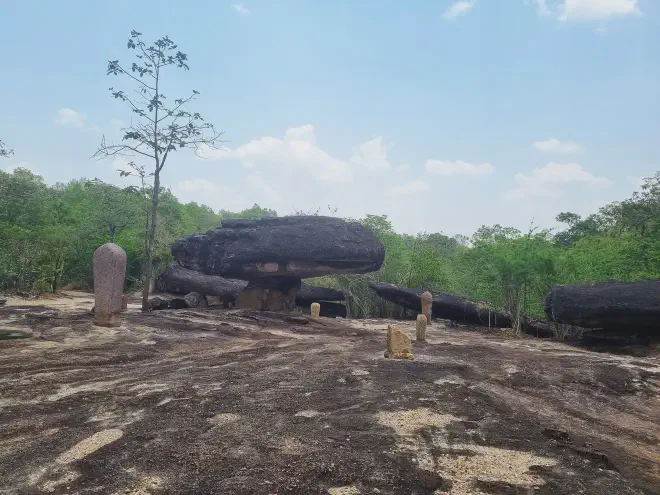Pottering around Phu Phrabat Historical Park
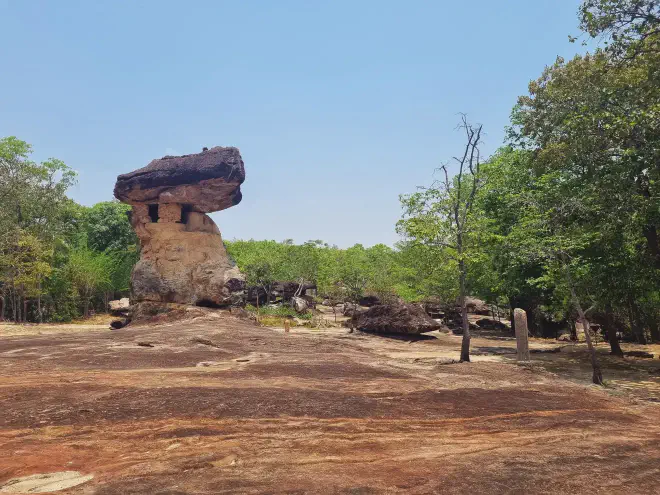
Table of Contents
What a day! #
I decided to explore the north-west of Udon Thani to make the most of the opportunity to visit. The first stop was a historical park in Phu Phrabat. It is a 1-hour drive from Udon Thani city.
… It is also worth mentioning, it was HOT today! 38oC, feels like 48oC, sort of hot!
On these trips, I enjoy riding a scooter or motorbike through the rural areas of Thailand just as much (or sometimes even more) than I enjoy the final destination. Watching the chaos go by at 80km/h is incredible… But I was underestimating the heat today. It was inescapable and it was unrelenting. I had to stop for a drink every 30 minutes or so, and I was still exhausted by lunchtime.
But even if the weather had been perfect, it would still have been a tough ride. The roads are rough. Potholes and ‘repair bumps’ require constant attention. The majority of the ride was on the motorway, with the ever-present danger of long haul lorries whizzing by. Entering the national park, the roads were in much better condition. With some trees providing shade, the undulating curves almost became enjoyable for a moment. But this moment is short-lived as we soon enter the historic park.
Entering Phu Phrabat Historical Park #
Upon arrival, there is a small collection of food and drink vendors, open grounds and a great-looking visitor centre. The visitor centre was air-conditioned and well staffed. The staff spoke excellent English and were eager to help. They gave me an overview of the park and suggested some highlights, so I could plan my route.
… To be honest, I was not expecting this so far out of the city. I had spent the last hour driving through dilapidated huts, with a conspicuous lack of English… The design, the comfort, and the friendliness of the visitor centre were a welcome surprise.
A ticket for farang was 100 Baht. Not everyone is a fan of dual pricing, but for less than a cup of coffee it’s not worth fussing over, in my opinion. The amount of money spent on maintaining the park was also evident before and throughout the day. It is clear that the money is being ploughed back into the park to make it an even more enjoyable place to visit.
A quick lesson about the park #
It is estimated that prehistoric people roamed the area hunting and gathering food between 2,500 and 3,000 years ago. The area appeared to be popular because the erosion of mixed strata of varying durability millions of years ago had left rock structures and other formations that could be used for shelter.
These hunters and gatherers established small villages here and painted their daily lives in some of the structures that remain today. The local clay is a rich ochre colour. This allowed them to paint red’ish hand prints, animals, humans, and other geometric designs.
More recently, these shelters were converted into sacred places for Buddhist rituals around the 9th or 11th century AD.
There are more than 20 structures. The original names (if any) are unknown. Instead, the local people have given them names in accordance with local folklore. (This was in the knowledge that the place and the folklore had nothing to do with each other).
Thoughts #
I enjoyed the park a lot more than I had expected to. It is wide open. You can explore, touch and interact with all the structures. While there are a few paths that are provided, for the most part, you are left to clamber over the rocks and find your own way around. This was an interactive and immersive experience as you explored and had a connection with the history of the park.
Descriptions and additional history were provided on an informative (but tiny) map. The rocks were marked with arrows to keep you on track. There were many (MANY!) small bilingual signs and some very welcome shelters throughout. During my trip I was During my trip, I was the only one silly enough to be out in the heat, so had the entire park to myself.
The ‘outer loop’ is about 2 km return (about 1 km from visitor centre to top of the mountain). Allow at least an hour for the walk, but it would be easy to spend 2 hours walking around and reading all the signs.
📷 Photos #
